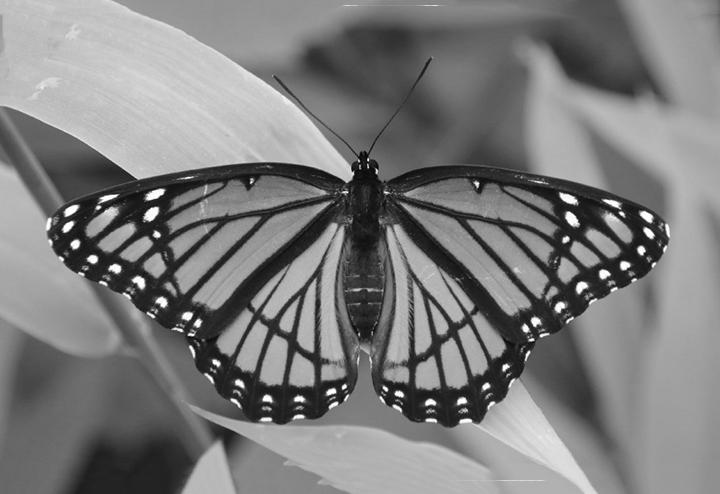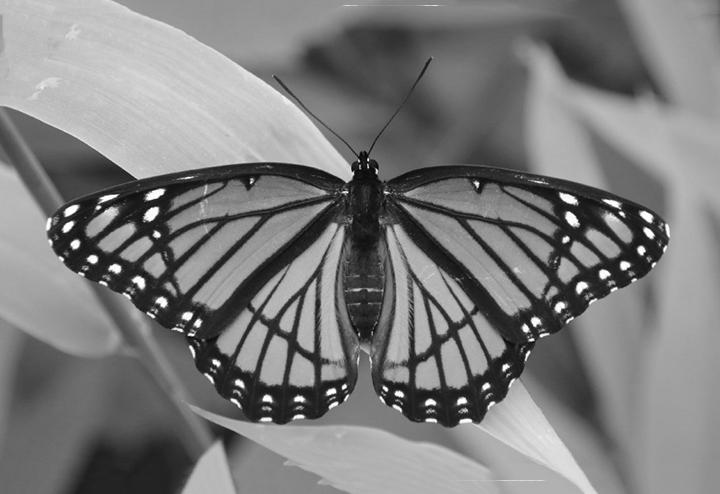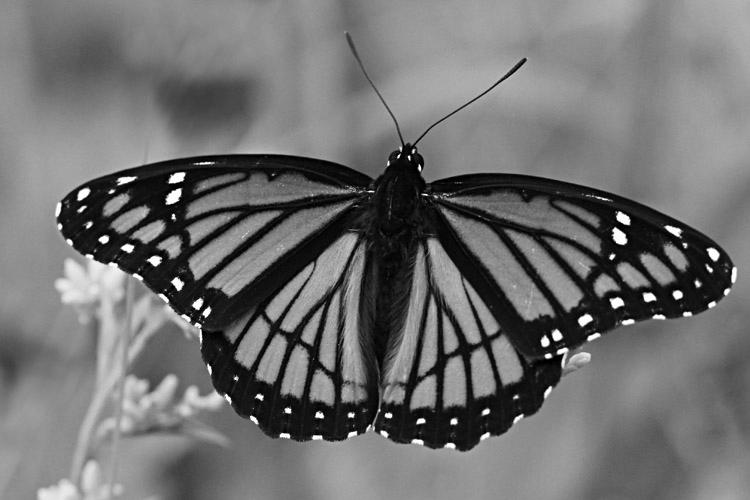Viceroy Butterfly
Basilarchia archippus
The Viceroy Butterfly can be found in most of the continental United States and in southern and northern Mexico.
It is usually on the wing from spring to fall, later in warmer climates.
This butterfly looks very similar in appearance to the Monarch butterfly.
However, you can tell the difference between the two butterflies because the this one has a curved black line on both of its hindwings, the Monarch does not.
Because this butterfly is similar in appearance to the Monarch butterfly it enjoys some protection from predators (e.g., birds).
Most butterfly predators won’t eat the Monarch.
This is because the Monarch larvae eats milkweed plants, which causes the adult butterfly to be unpalatable.
The adult butterfly is slightly smaller then Monarchs with a wingspan of about 3 inches (8 cm).

Habits:
There are two or three flights or generations per year depending upon locations, from through September.
Viceroys hold their wings horizontally when gliding, not at an angle like Monarchs or Queens.
Adults are strictly diurnal, they fly preferentially in the late morning and early afternoon.
The two were once thought to exhibit Batesian mimicry where a harmless species mimics a toxic species.
Studies conducted in the early 1990’s suggest that the Viceroy and the Monarch are actually examples of Mullerian mimicry where two equally toxic species mimic each other to the benefit of each.
Just goes to show you there’s always something new to discover in the natural world!
Life Cycle:

They mate in the afternoon. The female lays her eggs on the tips of the leaves of poplars and willows.
There are usually two or three generations of born each breeding season, depending on the length of the warm season.
Larvae and Hosts:
The larvae feeds on trees in the willow family Salicaceae, including willows (Salix), and poplars and cottonwoods (Populus).
The larvae sequester the salicylic acid in their bodies, which makes them bitter, and upsets predators’ stomachs.
As further protection, the larvae as well as their chrysalis stage, resemble bird droppings.
Nectar :
Once the adult butterfly emerges from the chrysalis and its wings dry it goes in search of food. Below is a list of their favorite foods and flowers:
Butterfly , Asters, Goldenrods.
Adults will also feed off rotting fruits ,sap, carrion and manure.
Often you will find congregations at wet areas or mud-puddles.
The Viceroy and Other Common Butterflies

More on Butterflies
A Butterfly Friendly Yard
Create Butterfly Gardens
Butterfly and Plants
Fresh Water for All Your Wildlife
Share Your Passions with «SBI»
Butterflies, Birds, Gardens and More.
Sign up below to start receiving your weekly «Gardening For Wildlife» newsletter.
Enter your E-mail Address
Enter your First (optional)
Then
’t worry — your e-mail address is totally secure.
I promise to use it only to send you Gardening For Wildlife.
(C) Copyright Gardening-For-Wildlife.com 2006 — 2019
SBI!
